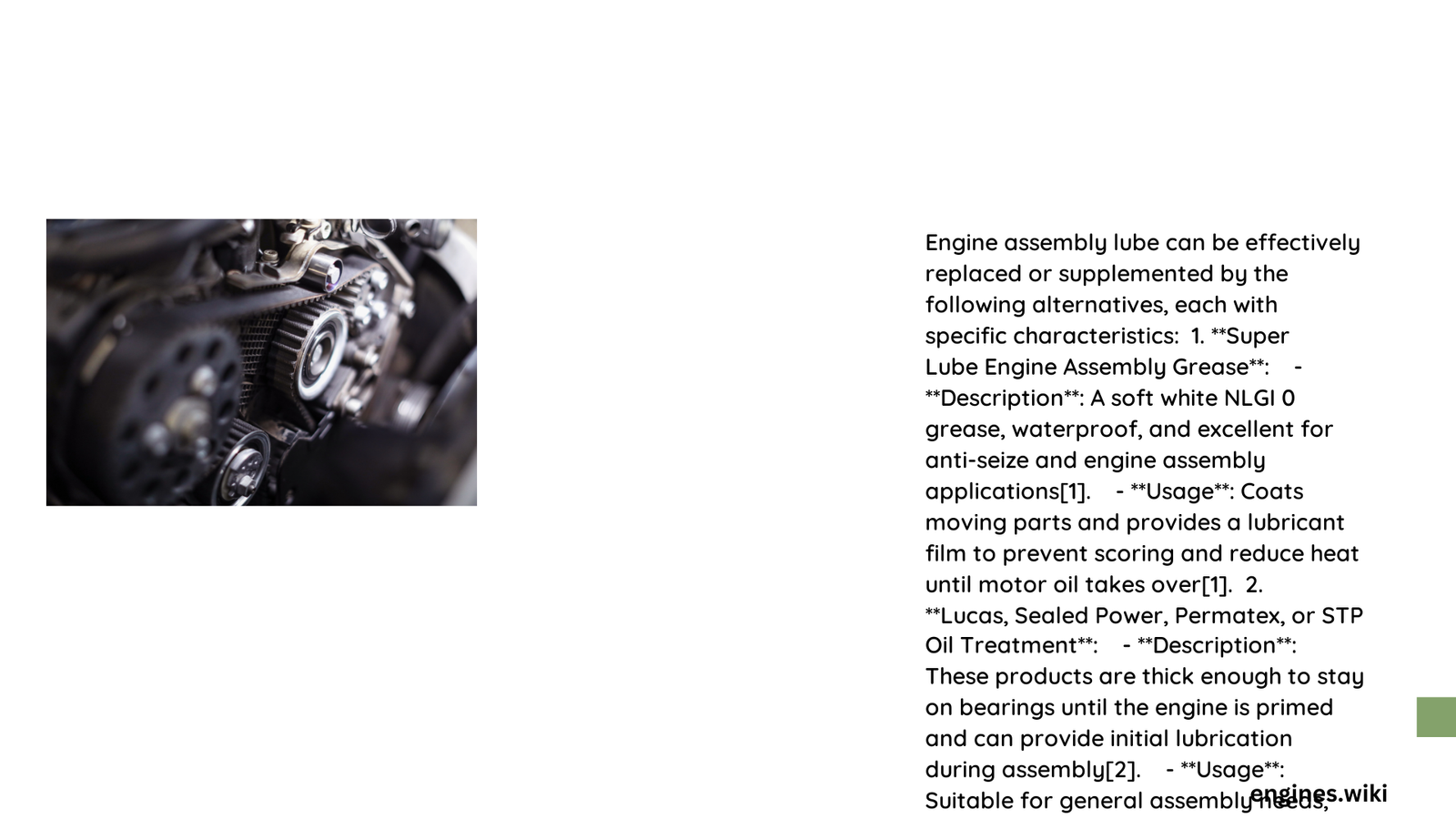Engine assembly lubrication is a critical process that determines the long-term performance and durability of automotive engines. Selecting the right lubricant involves understanding complex interactions between various components, viscosity requirements, and protective additive compositions. Mechanics and engineers must carefully choose lubricants that provide optimal protection during initial engine assembly and startup, preventing premature wear and ensuring smooth mechanical operation.
What Motor Oils Work Best for Engine Assembly?
Motor oils serve as a primary lubricant during engine assembly, with specific characteristics crucial for component protection. The ideal assembly lubricant should possess:
- Viscosity Range: 10-20 centistokes (cSt)
- Temperature Resistance: 200-300°F operating range
- Additive Composition: High EP (Extreme Pressure) and AW (Anti-Wear) additives
Recommended Motor Oil Characteristics
| Oil Type | Viscosity | Temperature Tolerance | Additive Concentration |
|---|---|---|---|
| Synthetic Blend | 15 cSt | 250°F | High |
| Full Synthetic | 12-18 cSt | 300°F | Very High |
| High-Zinc Assembly Lube | 15-20 cSt | 275°F | Extreme |
Why Are Specialized Assembly Lubricants Important?

Specialized assembly lubricants provide critical protection during initial engine startup by:
- Preventing metal-to-metal contact
- Reducing initial wear on moving parts
- Creating a protective film between components
- Minimizing friction during first rotation
Can Petroleum Jelly Be Used as Assembly Lube?
Petroleum jelly has limited applications in engine assembly:
- Pros:
- Inexpensive
- Provides temporary lubrication
-
Good for small component protection
-
Cons:
- Low melting point
- Inadequate for high-performance engines
- Limited temperature resistance
What Greases Work for Engine Component Protection?
Assembly greases offer unique advantages for specific engine components:
- Lithium-Based Greases
- Excellent high-temperature performance
- Wide compatibility with engine materials
-
Superior seal protection
-
Molybdenum Disulfide Greases
- Exceptional extreme pressure resistance
- Ideal for high-load bearings
- Maintains lubrication under extreme conditions
How to Select the Right Assembly Lubricant?
Key selection criteria include:
- Engine type and application
- Operating temperature range
- Component material compatibility
- Manufacturer recommendations
- Performance specifications
Technical Considerations for Assembly Lubrication
Professional engine builders should consider:
- Zinc dialkyldithiophosphate (ZDDP) concentration
- Friction modifier percentages
- Compatibility with modern engine materials
- Potential interactions with subsequent engine oils
Practical Application Tips
- Always clean components before applying assembly lube
- Use manufacturer-recommended lubricants
- Apply thin, uniform coating
- Avoid contamination during application
Common Mistakes to Avoid
- Using inappropriate viscosity
- Mixing incompatible lubricants
- Overlooking manufacturer specifications
- Applying excessive lubricant
Emerging Trends in Assembly Lubrication
- Nanotechnology-enhanced lubricants
- Environmentally friendly formulations
- Advanced synthetic compounds
- Precision-engineered additive packages
Final Recommendations
Select assembly lubricants based on:
– Specific engine requirements
– Manufacturer guidelines
– Performance specifications
– Professional technical expertise
References:
– SAE Lubrication Standards
– Society of Automotive Engineers Technical Papers
– Automotive Lubrication Research Consortium
